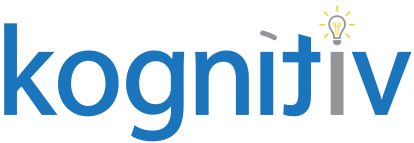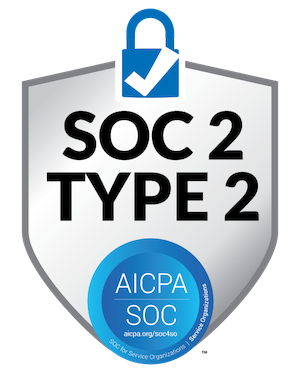Supervisory Organizations 101: Back to Basics

If you are reading this, then you are probably familiar with supervisory organizations, which are used by Workday HCM to represent an organization’s management structure. Why bother with a blog post on such a simple topic? Well, even though supervisory organizations are fundamentally straightforward, many Workday customers struggle with using and maintaining them. In fact, they are so foundational to the product that they may be overlooked. At launch, they tend to accurately reflect the person-to-manager relationships across the organization. But as workers transfer, reorganizations occur, and new organizations are created, the organization structure can quickly decay as it moves away from a pure representation of the company’s management hierarchy.
Also, during implementation, it is common for new customers to struggle with supervisory organization naming. Oftentimes the initial sets of names are based on something like departments, causing customers to want to split up the organizations because the names don’t make sense when different groups are consolidated under a single manager. In this case, the general suggestion is to change the naming convention (or forego one altogether and simply use manager names as the supervisory organization names)—that is, adapt the names to the resulting structure, rather than retrofit the structure into the alternative naming convention. Keep in mind that there are no strict guidelines on exactly how supervisory organizations are used. Every Workday customer is different, and it goes without saying that tenant configurations will vary based on specific requirements and use cases. By no means does your organization need to adhere directly to the guidelines listed here; these are general recommendations based on years of experiences assisting clients with issues stemming from, or related to, their supervisory organization hierarchies.
In this post, l will cover:
- The standard, “vanilla” supervisory organization setup.
- Some scenarios where you may need to stray from the standard setup.
- How to audit your organization setup for potential problems, and some tools to assist with cleanup.
The primary takeaway from this post is: While it is possible to leverage supervisory organizations for purposes beyond representing the management structure, we recommend against doing so unless there are no feasible alternatives. The added complexity with additional use cases and maintenance creates enormous challenges when it comes to using supervisory organizations for their core purpose: to group workers based on worker-to-manager relationships for security, reporting, and general transaction workflows. This post is intended to help you understand when the tradeoff could be necessary, and how to move back towards a traditional setup if needed.
The Gold Standard
Typical supervisory organization design for a Workday customer’s initial implementation uses a 1:1 approach for managers and supervisory organizations, by creating one supervisory organization for each manager at the company, and rolling each individual organization up to its manager’s membership organization. This results in a “vanilla” supervisory organization hierarchy where each manager is responsible for one organization only.
Standard exceptions within this approach:
- The top-level manager (e.g. the CEO or President), who manages a group of other high-level workers, is the manager and a member of an additional supervisory organization at the very top of the organization structure.
- At cutover, there may be workers temporarily reporting to a manager who is not their permanent manager, such as in the case of a recent vacancy. This could result in a “missing” organization at launch, which can be inserted into the structure once the vacant manager’s position is backfilled.
In other words, the standard design setup allows you to derive the entire supervisory organization structure without needing to know anything other than who all workers’ managers are. It can, and should, be as simple as that.
From a maintenance and ease-of-use perspective, the closer you can stay to the vanilla setup, the better. With only one supervisory organization per manager, it is easy to know what each organization represents, and where it should fit within the structure. Any question of whether a new organization is needed, or whether an existing organization is not needed, can be answered by whether there is (or will be) a manager who does not have an organization to contain their direct reports.
Exceptions to the Rule
There are some scenarios that force you to break away from the standard supervisory organization setup due to limitations with Workday functionality. However, you should always consider whether these types of setups are truly necessary, and not just replication of a historic framework.
Location-based security access to Supervisory Organizations: Say you have HR Partners who are responsible for managing staffing, including creating new positions, for certain locations. Since positions are technically created in supervisory organizations, there needs to be a link between location hierarchies (where HR Partners hold the roles for their supported locations) and supervisory organizations (where positions are created) to give these HR Partners access. This link is established with the “Primary Location” attribute for a supervisory organization, which is a single-instance attribute (i.e., each supervisory organization can only have one primary location).
If there is a situation where HR Partners for different locations need to support the same manager, then you may need to create more than one Supervisory Organization for that manager. This could be the case if you have a manager who manages workers in multiple locations, where those locations have different sets of HR support personnel.
Staffing Model differences: In retail, it is somewhat common for stores to have high turnover. These situations can be managed well with the Job Management staffing model, which creates and closes jobs on-the-fly on an as-needed basis. The staffing model is set on an individual supervisory organization.
If a manager is responsible for approving time entries for a group of retail workers, but also has more permanent workers reporting to them, it may not make sense for both types of workers to share staffing models. Because the staffing model is set at the supervisory organization level, the manager would need to manage two supervisory organizations to accommodate this.
Some additional examples:
- Management chain differences, where the manager hierarchy “splits” at a certain point.
- Security requirements, where a supervisory role needs more granular access to a subset of a manager’s workers.
The key feature of each exception listed above, is that they are needed to overcome limitations with functionality related directly to the supervisory organizations themselves.
How can you identify whether a scenario should be dealt with outside of altering the supervisory organization structure?
As a rule of thumb, if you are ever creating more than one supervisory organization for a particular manager, consider whether doing so is the only way to meet your requirement.
An example where this may not be the case, is when a Workday customer starts creating additional layers in their supervisory organization hierarchy beyond direct worker-to-manager relationships. They may be attempting to represent additional organizational dimensions, such as departments or business units.
While supervisory organizations offer the flexibility to represent those dimensions, this type of setup can quickly create maintenance nightmares, as it usually requires consistent organization naming conventions, multiple supervisory organization subtypes, and perhaps most daunting, manager role maintenance on multiple supervisory organizations for individual managers. Whenever a manager turns over, role assignments on multiple organizations need to be maintained. And if a manager transfers, it is less clear on how their workers and managed organizations should be handled. This is especially problematic for larger clients, where central HR may not be familiar with the circumstances around individual managers. The root cause of this issue is that the supervisory organization structure is now being used to represent multiple attributes: the management structure of the company, as well as its functional or process lines.
Again, since there are no strict limitations on how a Workday customer uses supervisory organizations, the type of setup described here is absolutely allowed. However, in this situation, it may be better to limit the supervisory organizations to their baseline purpose, and use additional organization structures to represent the other dimensions. Identifying Potential Problems and Fixing Them If you have been struggling to maintain your supervisory organization structure, or do not know where to start when it comes to auditing its setup, we can help get you started. First, you will want to identify the problem areas within your hierarchy. Two custom reports can help with this (report definitions attached):
Audit – Supervisory Organization Misalignment: Identifies situations where a supervisory organization’s placement in the hierarchy is out of sync with its assigned manager’s membership organization.
Audit – Supervisory Organization Count by Manager: Displays the number of organizations managed by each individual manager in the system. The counts can be drilled into to see the specific organizations managed by each manager.
As a bonus, both reports will identify any supervisory organizations that are missing a manager entirely.
Results on the first report almost certainly require action, since misalignments between manager assignments and organization membership cause the reporting structure represented by the organizations themselves to be out-of-sync with the reporting structure represented by the organization role assignments. This can have real-world consequences, potentially allowing a manager to view sensitive information for the wrong employees, or causing approval chains to route to the wrong manager.
The second report is more informational, in the sense that the results need to be interpreted based on your goals and requirements. There may be situations where managers are assigned to multiple organizations purposefully, as mentioned previously. However, this report can help quickly identify managers with particularly high organization counts, and assist with the maintenance issues described above.
Once you have identified the changes that you need to make, you need to process those changes. If the cleanup is a relatively small effort, it may be easiest to simply process the changes manually in the system. However, if a larger volume of changes is needed, there are certain tools that may make the process smoother.
Org Studio and Mass Actions: This is a relatively new set of features in Workday that allows you to draft, collaborate on, and process multiple organization-impacting changes together using a drag-and-drop interface. It can be used to plan organization structure changes, manager changes, and both worker and open position movements. Given its wealth of capabilities, there is a learning curve, but it is worth the time and setup investment if its functions would be used on a somewhat frequent basis
EIBs: Love them or hate them (or both), EIBs offer the most flexibility when it comes to processing high-volume transactions. Here are a few EIBs (by web service) that may be useful when updating the supervisory hierarchy:
- Add Update Organization: Create new supervisory organizations, update existing organization information (names, superior organizations, etc.)
- Inactivate Organization: Inactivate supervisory organizations that are no longer being used.
- Move Workers by Organization: Transfer workers and open positions between supervisory organizations.
- Close Position: Close positions in organizations for inactivation.
- Assign Roles: Add, update, and remove manager role assignments.
In Conclusion
Due to the nature of supervisory organizations, they can be challenging to maintain, a problem that is compounded when they are used to represent information beyond their core purpose. We recommend against adding complexity to your supervisory organization structure unless there are no other options to accommodate your requirements. Hopefully, the information contained in this post will help you determine whether added complexity is justified, and provide you with some tools and knowledge to assess your organization structure’s health and update them if necessary.



